Lima city
The city of Lima, known as the ‘City of Kings’, is one of the main tourist attractions in Peru. Through its streets you can see beautiful colonial and modern constructions. There is the international airport of the country since it is a mandatory stop. Its main attractions are Miraflores, the Center of Lima, Pachacamac, the Magic Water Circuit, the Cathedral, the Huaca Pucllana and more. Learn more about this historic city, the capital of Peru.
All about the city of Lima
Explore Lima
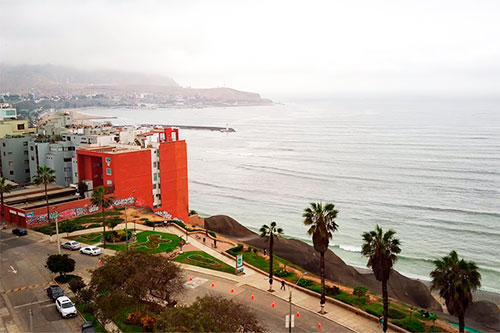
1 Barranco in Lima
Barranco is one of the most touristic districts of Lima. It has attractions such as the Bridge of Sighs, the hermitage, its boardwalk, streets with murals and more.
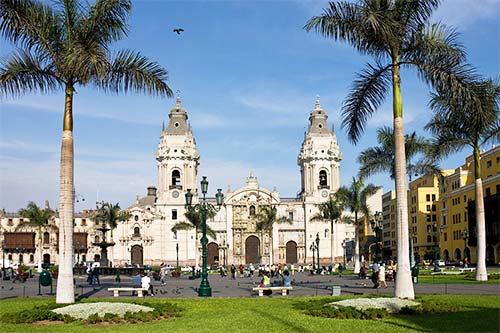
2 The Cathedral of Lima
The Cathedral of Lima is the most important religious temple in Peru. Get to know its treasures, paintings, chapels and even the crypt with the remains of Francisco Pizarro.
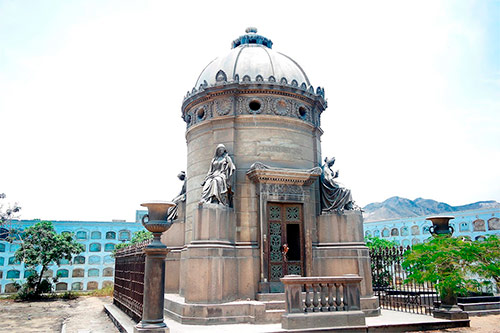
3 Maestro Presbítero Cemetery in Lima
The Maestro Presbítero cemetery is the oldest in Peru and South America. There are the mausoleums of Miguel Grau, Francisco Bolognesi and more.
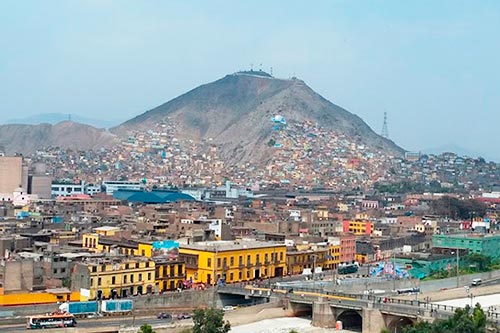
4 The Cerro San Cristobal in Lima
The Cerro San Cristobal is a symbol of Lima. It is in the Rimac, about 10 kilometers from the Main Square. It has a great history and incredible landscapes.
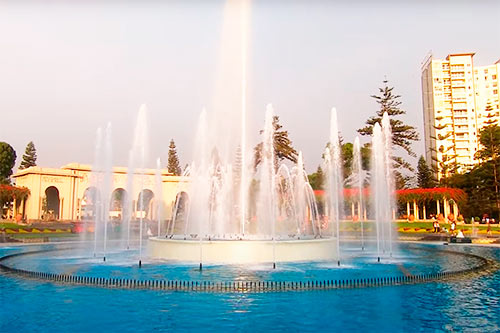
5 The Magic Water Circuit
The Magic Water Circuit in the Lima Reserve Park is a symbol of Lima. Know the location, history, prices, schedules and more information.
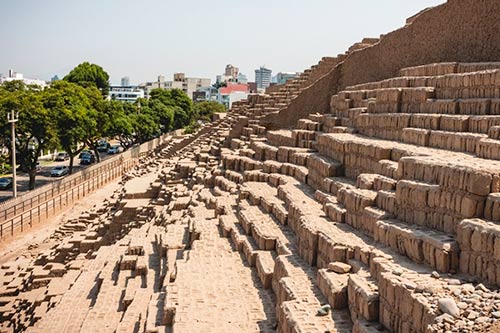
6 Huaca Pucllana
Huaca Pucllana is a symbol of Lima. It is in the heart of Miraflores. It was a religious temple of different cultures such as: Lima, Wari and Ychma.
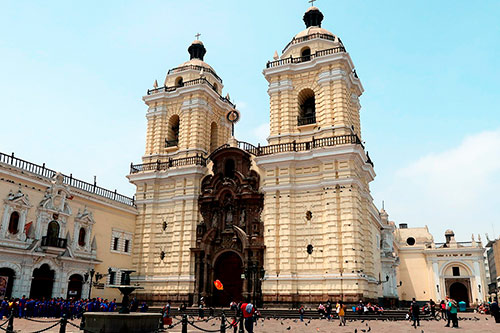
7 Church of San Francisco in Lima (Catacombs)
The church of San Francisco in Lima is famous for its fearsome catacombs, an old colonial cemetery whose limits are still a mystery.
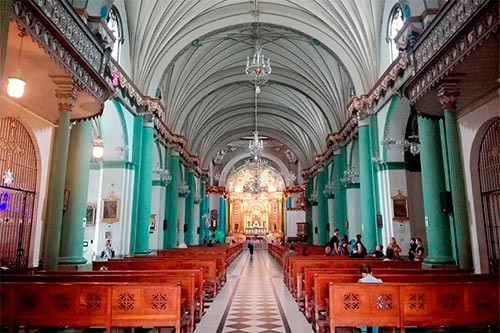
8 Church of Santo Domingo in Lima
The University of San Marcos was inaugurated in this temple in Lima in 1553. In addition, the remains of Santa Rosa de Lima and San Martín de Porres rest.
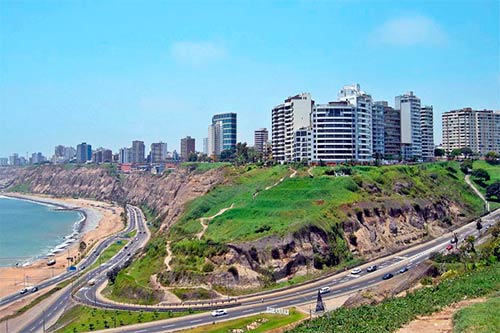
9 Miraflores
Miraflores is the most touristic district of Lima. It has hotels and attractions such as Huaca Pucllana, Kennedy Park, Malecón, Larcomar and more.
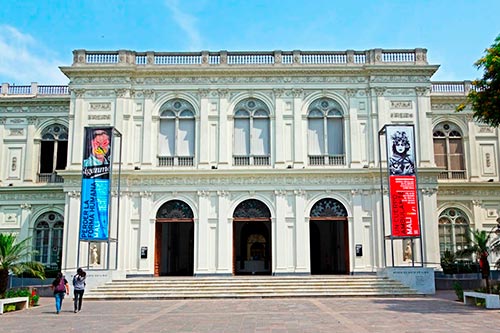
10 The Lima Art Museum (MALI)
The MALI is one of the best museums in all of Lima and Peru. It has permanent and temporary exhibitions on the history of art in the country.
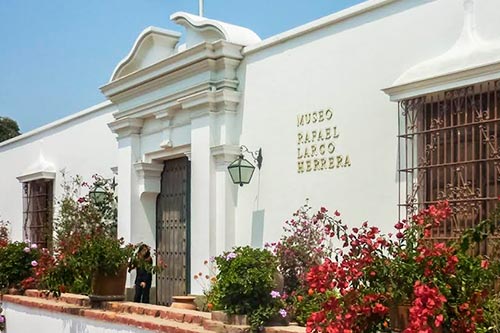
11 Larco Museum of Lima
The Rafael Larco Hoyle Museum is one of the best in Lima. It exhibits ceramics, textiles, gold and silver objects, over more than 5 thousand years old.
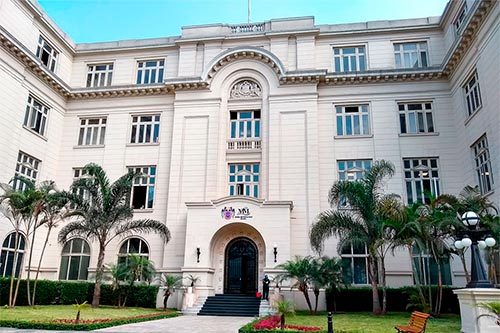
12 Metropolitan Museum of Lima
This museum is one of the most modern and innovative in Peru. It has 27 audiovisual rooms in 3d and 4d that recreate the history of Lima.
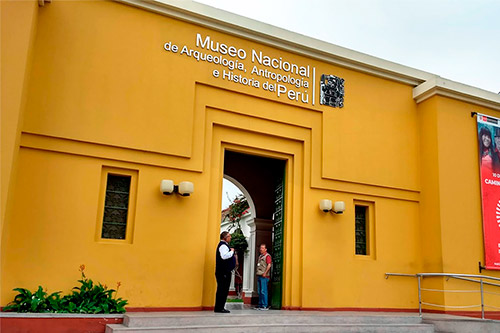
13 National Museum of Archeology, Anthropology and History
This museum is one of the most important and oldest in Peru. It was founded in 1822 by José de San Martín. It has 30 showrooms.
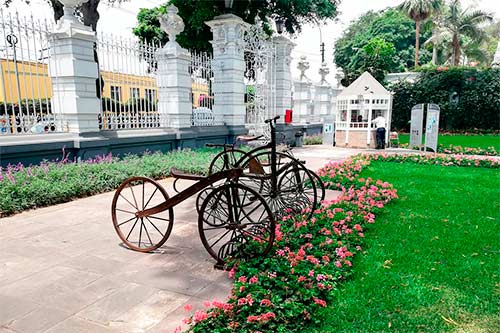
14 Pedro de Osma Museum in Lima
The museum is in Barranco, Lima. It has 12 rooms of colonial and modern art. It is considered the largest viceregal art collection in Peru.
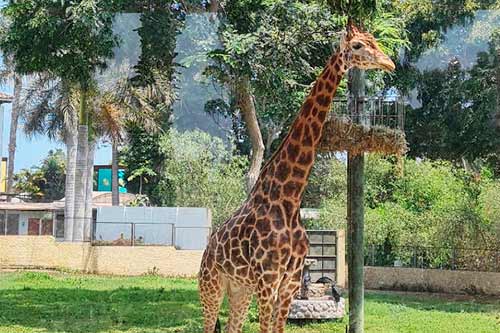
15 The park of legends in Lima
This zoo has hundreds of species of animals such as giraffe, hippopotamus, condor, bengal tiger, anaconda, penguin, cougar and more.
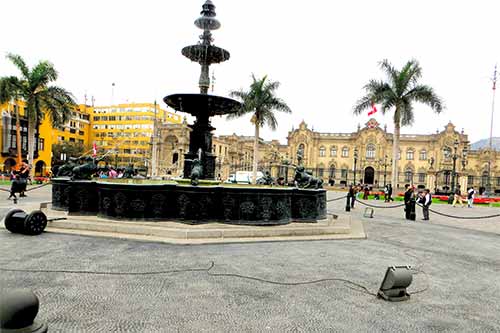
16 Main square of Lima
The Main Square of Lima was created with the founding of the city by Francisco Pizarro in 1535. In front is the Cathedral, the Government Palace and more.
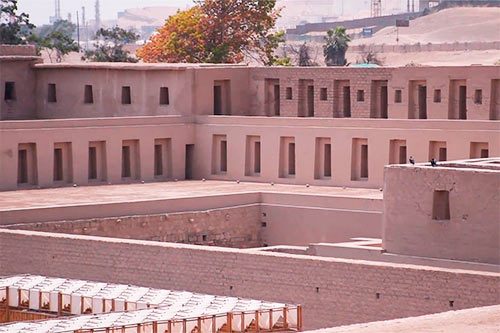
17 The Sanctuary of Pachacamac in Lima
Pachacamac was a very important oracle and religious sanctuary for various cultures of ancient Peru. Today it is one of the best archaeological sites in Lima.
The city of kings
Lima is also known as the ‘City of Kings’ as Francisco Pizarro ordered it the day it was founded in 1535. The reason is that that day, January 18, the ‘Wise Men’ headed towards Bethlehem, although it is also believed that the name is also related to King Charles V of Austria and King I of Spain.
Since its foundation, Lima played a fundamental role, first in the Viceroyalty and then in the Republic of Peru. The capital of the country, the Government Palace and the main government institutions were established there.
Lima is a very diverse city. Throughout its more than 4 centuries of history, the city was changing due to migration from the provinces and modernity that was adapted in various ways in certain districts.
The city of Lima, also called ‘Metropolitan Lima’ covers a total area of 2,672 square kilometers. It has 43 districts, of which the most touristic and modern are Miraflores, Barranco and San Isidro. Most foreign visitors stay there.
In the districts of the periphery of Lima, on the other hand, modernity was adapted in an informal way. Many of these districts were created after the immigration of Andean settlers who came to the city throughout the 20th century.
Today Lima displays a mix of cultural heritages. It is like a reduced Peru in a single city. However, it is still possible to appreciate the beautiful palaces and churches from its colonial past. There are even vestiges of the Inca ancestors and cultures prior to the Incas.
Lima offers a great diversity of tourist attractions such as its colonial streets, its Cathedral, the Plaza de Armas, the modern district of Miraflores, Barranco, its beaches, archaeological sites such as Pachacamac, Huaca Pucllana and much more.
Location
Lima, the capital of Peru, is located on the central coast of the country. Due to its central location in the map of the country, from there you can travel to different cities such as Cusco (1,102 kilometers by road), Arequipa (1,011 kilometers by road), Tumbes (1,271 kilometers by road), Puno (1,292 kilometers by road), Ica (304 kilometers by road) and more.
Geography
Lima is located next to the Pacific Ocean where there are arid deserts and valleys over the Rímac, Lurín and Chillón rivers. The city is flanked by Andean foothills. The average altitude of its territory is only 100 meters above sea level.
Map
History of Lima
The arid geography of Lima was a territory inhabited by numerous pre-Inca cultures that settled in the valleys of the Lurín, Chillón and Rímac rivers.. Ethnic groups such as the ‘Maranga’, the ‘Lima’ and, above all, ‘Ychma’ built citadels and temples from 100 B.C. until the imperial time of the Huari (from the 7th to the 13th century) who adopted the buildings made by the first inhabitants of Lima and adjusted them to their beliefs and architecture.
After the disappearance of the Huari and a period where certain ethnic groups such as the Chancay culture once again gained prominence, the valleys of Lima were adhered to the nascent empire of the Incas.
The Incas settled in Lima during their expansionist period in the 15th century. Huacas and temples such as Huallamarca, Huaca Pucllana, Mateo Salado and more were built at this time. However, the most important work was definitely Pachacamac. The Incas adapted the belief and divinity of this ‘huaca’ and turned it into the most important religious sanctuary on the entire Pacific coast.
In the 16th century the Spanish, led by Francisco Pizarro, arrived in Pachacamac looting the place and murdering the Inca population that protected the idol of Pachacamac. Later, after the establishment of the colony, they founded the ‘City of Lima’ in the Plaza de Armas on January 18, 1535.. There they established the capital of the new ‘Viceroyalty of Peru’ and built religious temples and colonial mansions.
During the colonial era, the city of Lima had a leading role mainly due to the trade generated by the port of Callao. The city was embellished with gardens and large houses inhabited by the Spanish and Creole aristocracy.
Enlightenment ideas brought emancipatory ideas to the continent in the 19th century. In 1820 the Argentine general Don José de San Martín disembarked in Lima. In 1821 the Independence of Peru was proclaimed in the Plaza de Armas. Lima was declared the capital of the country. There the Government House and the first Constituent Congress were established.
Since then, the city of Lima lived through times of prosperity, of declines but always with high inequalities between the bourgeois class and the common population. It is worth mentioning that, during the War with Chile (1879 – 1883), the city of Lima was occupied by the Chilean army that caused irreparable excesses such as the burning of the National Library.
During the 20th century, the city of Lima began a slow process of modernization. The limits of the city expanded in a disorderly manner as a result of the immigration of settlers from the provinces. The internal war against Sendero Luminoso in the 1990s generated an intense wave of immigrants from Andean cities such as Ayacucho who settled in districts on the periphery such as Villa el Salvador. In turn, the bourgeoisie established its residence in the central resorts such as Miraflores.
Currently, the city of Lima has a cultural diversity that makes it a ‘mini-Peru’. The city has 9 million 674 thousand 755 inhabitants, approximately. It is the most populated city in the country with almost 30% of the total population of the Peruvian territory.
The main tourist attractions
- Arms square – The core of the historic center of Lima is the Plaza de Armas, one of the largest and most beautiful in Peru. The city of Lima was founded there in 1535. Also, in 1821, the Independence of Peru was declared. It covers an area of 140 square meters. Because it is located in the ‘Historical Center’ of the city, it is recognized as a World Heritage Site by Unesco.
- Cathedral – The Cathedral is the most important Catholic temple in the city of Lima. It is located in front of the Plaza de Armas. It has a Renaissance and neoclassical style architecture. It stands out for its high towers, its high doors and its beautiful façade. Inside there are five naves with gold and silver works of art. It is worth mentioning its choir stalls, its pulpit and the crypt of Francisco Pizarro.
- Miraflores – The most touristic and modern district of Lima is Miraflores. There are some of the best hotels and restaurants in the city. Its streets and parks are very popular both by Peruvians and foreign tourists. Its shopping centers, boardwalk with ocean views, Kennedy Park, Love Park and the famous Huaca Pucllana stand out. This district is among the 10 most visited tourist attractions in Lima.
- Barranco – This Lima district located on the city’s coast stands out for its serene atmosphere, full of culture and history. Its inhabitants, mainly from the middle and upper class of Lima, have promoted spaces where you can learn more about the history of the district and the city. Its main square, the descent of the baths, its beaches, the Pedro de Osma museum and the famous ‘Bridge of Sighs’ stand out.
- Pachacamac – The most important archaeological site in the city of Lima is definitely Pachacamac. It is a sanctuary adored by various cultures such as the Ychma, the Huari and the Incas. His maximum idol was a wooden staff that was reached after a long pilgrimage. It currently has a beautiful site museum and amazing buildings with the Temple of the Moon, the Temple of the Sun and more. It is located south of Lima, 40 kilometers from the city center.
- The fortress of Real Felipe – This military compound was built in the Viceroyalty of Peru in order to protect the city against the threat of pirates and corsairs. It is located in Callao, 14 kilometers from the historic center of the city. It has watchtowers, defense posts with cannons, weapons enclosures, attack posts and more. It is one of the most important constructions of the colonial era.
- The Magic Water Circuit – This famous city park offers a light show and music coming from 13 modern water fountains. The place also has beautiful green areas, sale of Lima desserts and lots of fun. It was created in 2007 with the purpose of recovering a disused public space. It holds the Guinness record for having the largest set of water sources in the world located in the same public place.
The museums of Lima
- The Museum of Art of Lima (MALI) – This museum, one of the most important in the city, has permanent and temporary exhibitions of works of art, whether modern or classical. It is located in the famous ‘Parque de la exposition’, in an area of 4,500 square meters. The museum stands out for its constant cultural activity with the sale of works of art inside and around it.
- The Larco Museum of Lima – This museum is one of the ones that best explains the history of pre-Columbian Peru throughout more than 5,000 years of development, from the Caral civilization to the Incas themselves. It was founded by the archaeologist Rafael Larco Hoyle but owes its name to his father, the politician and philanthropist Rafael Larco Herrera who donated his private collection to create the museum. It is located in Pueblo Libre, 5.8 kilometers from the center of Lima.
- The National Museum of Archaeology, Anthropology and History – This museum was created in 1822, making it the oldest in Peru. It was founded under the auspices of the liberator José de San Martín. Its first pieces from pre-Columbian and colonial Peru were looted during the War with Chile. In 1905 the museum was restructured under the direction of notable archaeologists such as Max Uhle, José Augusto de Izcue, Julio Cesar Tello and more. Its most famous piece is the ‘Estela de Raimondi’ belonging to the Chavín culture. It is located in the Pueblo Libre district, 5 kilometers from the center of Lima.
- The Pedro de Osma Museum – This museum is located in a French-style mansion belonging to Pedro de Osma Gildemeister, a philanthropist and aristocrat from Lima, an avid collector of pieces of colonial art from the Cusco and Ayacuchano tradition. The private collection as well as the mansion were donated by the descendants of the owner, Pedro and Angélica de Osma Gildemeister. The museum was founded in 1987. It has canvases, sculptures, furniture and silverware. It is located in the district of Barranco, 12 kilometers from the center of Lima.
Hotels and restaurants
The city of Lima has a hotel offer that ranges from luxurious 5-star services to shared lodgings for backpackers that provide a hectic nightlife.
The most famous 5-star hotels for their quality are: the JW Marriot Hotel, the Westin Lima Hotel, the Swissotel Lima, the Hilton Miraflores Hotel, the Belmond Miraflores Park, the Casa Andina Premium San Isidro Hotel, the Delfines San Isidro Hotel, the Sheraton Lima and more.
The most famous cheap hotels for backpackers in Lima are: the Pay Purix Backpackers Hotel, the Pariwana Hostel, the Lima Backpackers, the Backpacker House The Pacific, the 1900 Backpackers Hostel, the Bean Bag Hostel Lima and more.
The restaurants vary according to their quality, however, they all offer Peruvian food, considered one of the best cuisines in the world. Some of the most famous restaurants recognized for their quality are: Central Restaurant (by chef Virgilio Martínez), Maido (fusion of Japanese and Peruvian food), Saha (Peruvian food with innovative ingredients and techniques), La Mar Cevichería (Peruvian seafood), Panchita (typical Lima dishes), Mayta (Peruvian food made with local products), Rafael (combines Peruvian food with Japanese and Italian) and more.
Bars and discotheques
Lima offers one of the best nights of bars and clubs in South America. The best and safest nightclubs are found in the districts of Miraflores and Barranco. Worth noting: Sargento Pimienta Rock Bar (rock music with live concerts), Hensley RnR Bar (with rock, metal, punk and ska music), Bizarro de Miraflores (reggaetón, techno, salsa, tropical), Loki Bar de Miraflores (Latin, rock, electronic music) and more.
Lima is dangerous?
Lima is a large city with districts with low, medium and high incidence of robberies and assaults. The safest are precisely the districts where foreign tourists usually stay: Miraflores and Barranco. The districts with a medium incidence of robberies are central places such as: Cercado de Lima, Pueblo Libre, San Isidro, Magdalena and others. The peripheral districts of the city are the most dangerous: San Juan de Lurigancho, San Juan de Miraflores, Villa el Salvador, Comas, Puente Piedra, Villa María del Triunfo, etc.
Photos of Lima
More information
Lima currently has the only international airport in Peru, the Jorge Chávez airport. There are direct connections with the main airports in Europe, North America and all of South America.
Lima has two zoos: the Parque de las Leyendas (San Miguel district) and the Huachipa Zoological Park (in the Ate district). The most famous and preferred beaches by citizens are: El Silencio (in the Punta Hermosa district), La Herradura beach (in the Chorrillos district), Punta Hermosa beach (in the Punta Hermosa district), Asia beach (in the Asia district) and more.
The city of Lima has an electric train service that runs through several districts. It also has road corridors such as the ‘Blue Corridor’, whose buses link the district of Miraflores with the Center of Lima. The prices of the taxi service are negotiable with the taxi drivers.
Questions and answers about the visit to Lima
- 1) How’s the weather?
Lima has a temperate climate with 4 seasons throughout the year: summer (from December 22 to March 21), autumn (from March 22 to June 21), winter (from June 22 to September 22) and spring (from September 23 to December 21). In summer the maximum temperature can reach 29ºC. and the minimum at 19ºC. In winter, the maximum temperature can reach 20ºC. while the minimum can drop to 13ºC. - 2) When is the best time to go?
Lima can be visited at any time of the year. For many, summer (from December 22 to March 21) is a good occasion because the sky looks brighter and the spas are filled with visitors. - 3) What is the most spoken language?
Spanish is the most spoken language in Lima. Some inhabitants from the country’s provinces also speak the Quechua language. Many tourist services offer attention in English. - 4) What to eat in Lima?
In addition to the typical dishes of Peru, do not miss the opportunity to enjoy some of the most famous Lima desserts such as: picarones, anticuchos, zambito rice, purple mazamorra, rice pudding and more. - 5) How much is a taxi ride from the airport to Miraflores?
The cost of a taxi service from Lima’s Jorge Chávez airport to the Miraflores district is approximately 60 soles (18 US dollars on average). - 6) How much does a ‘City Tour’ in Lima cost?
The City Tour Lima covers in half a day (4 hours) the Center of Lima, its churches, colonial houses, markets, museums and main historical monuments. It has a price of 30 dollars per person, approximately. - 7) Where to go shopping in Lima?
Lima has several supermarkets and shopping centers where you can shop. Perhaps the most famous are: Larcomar (Miraflores), the Jockey Plaza (Surco) and the Real Plaza Centro Cívico (Cercado de Lima). - 8) How to visit ‘Gamarra’ in Lima?
Gamarra is a commercial emporium famous for selling clothing at low prices. You can get there by taxi, public service bus or electric train service. It is located in the downtown district of La Victoria. - 9) How to visit the ‘Asia’ spa in Lima?
The ‘exclusive’ spa in Asia is approximately 100 kilometers from Lima. In summer this place is filled with a hectic nightlife. The place is famous for its shopping centers and beautiful beaches. You can get there by interprovincial buses or collective taxis. - 10) What are the “limeños” like?
The people of Lima are friendly and willing to start a conversation with tourists. Most of them are children or grandchildren of people who arrived in Lima many years ago from cities in the provinces of Peru. For this reason, the cultural diversity of its inhabitants is very interesting.